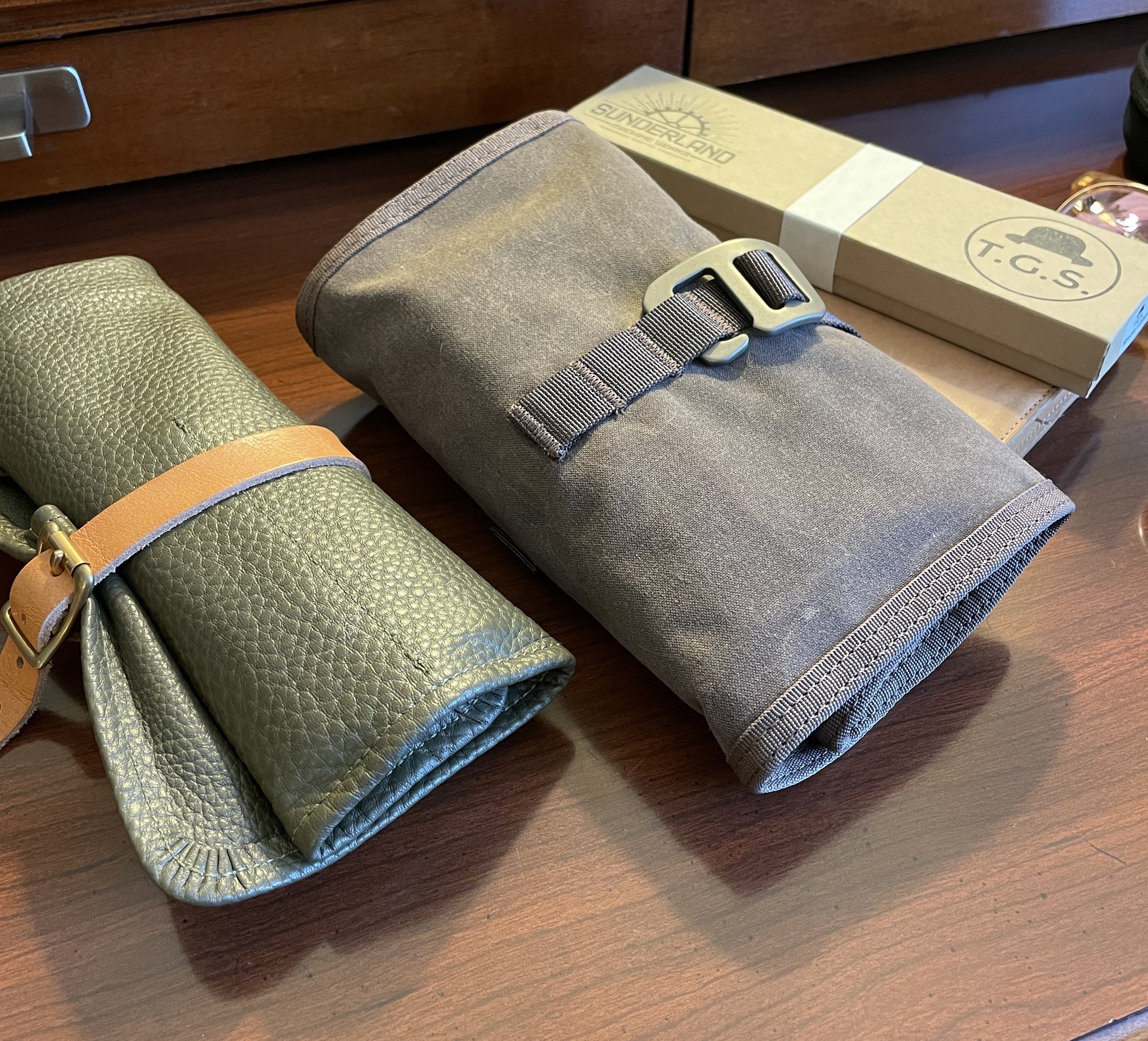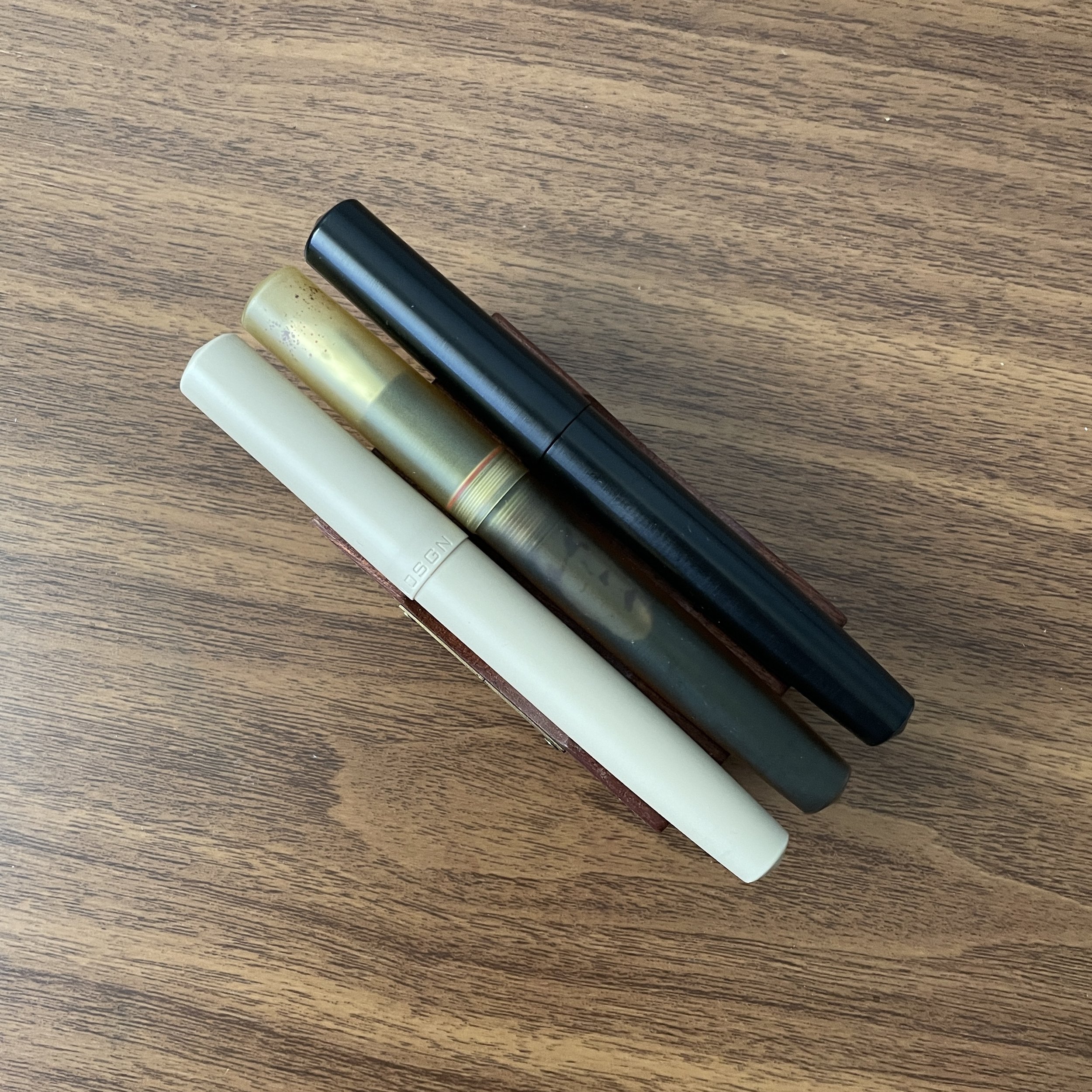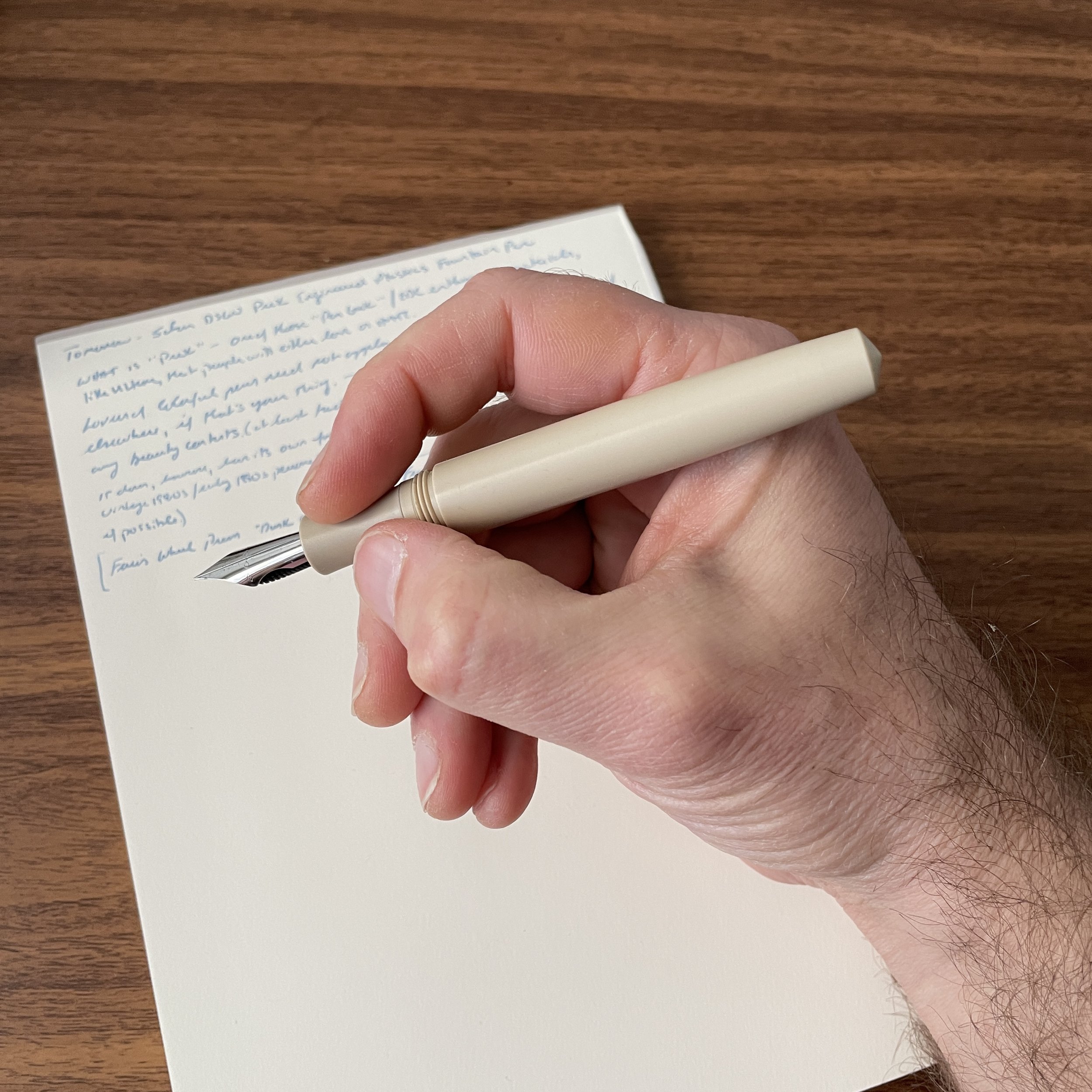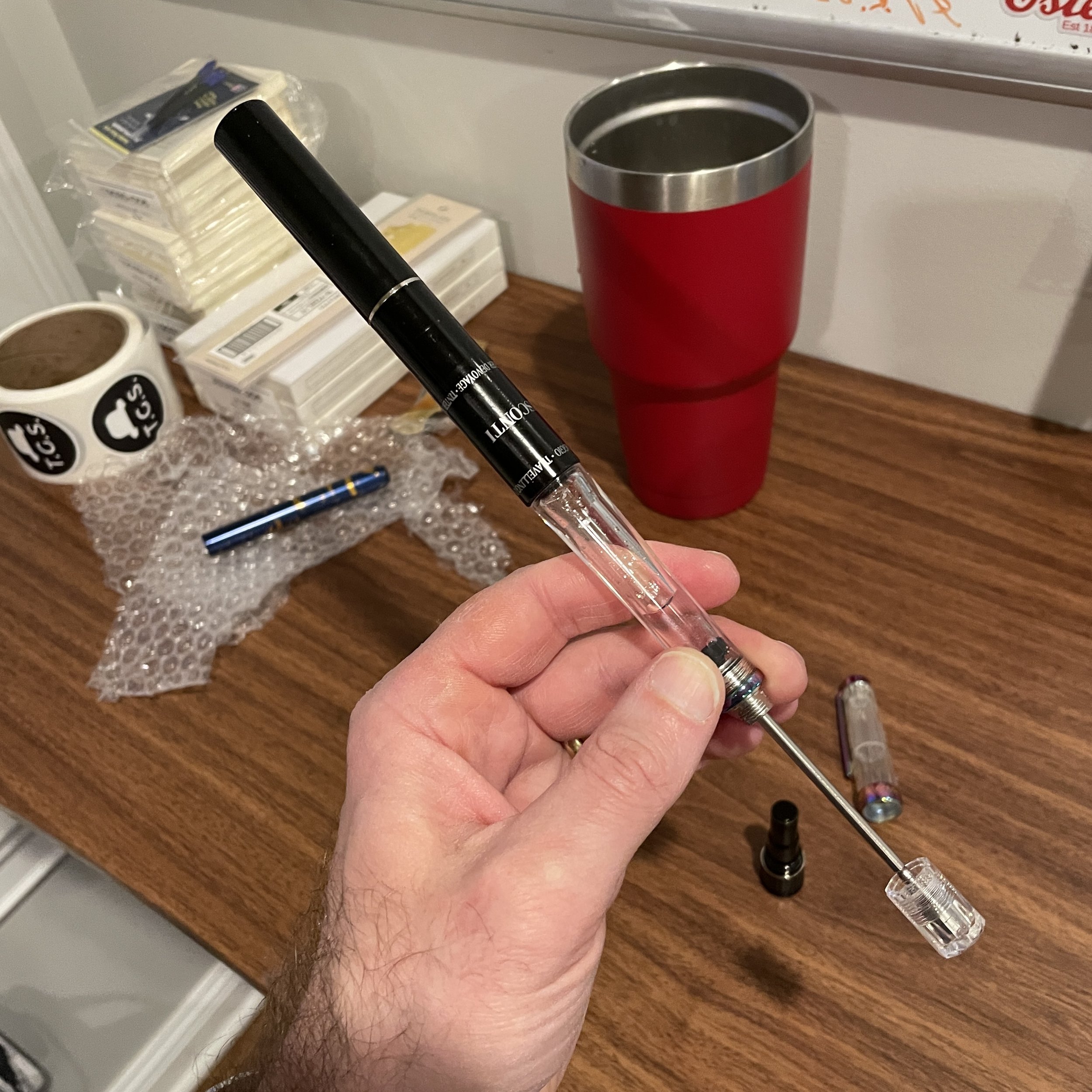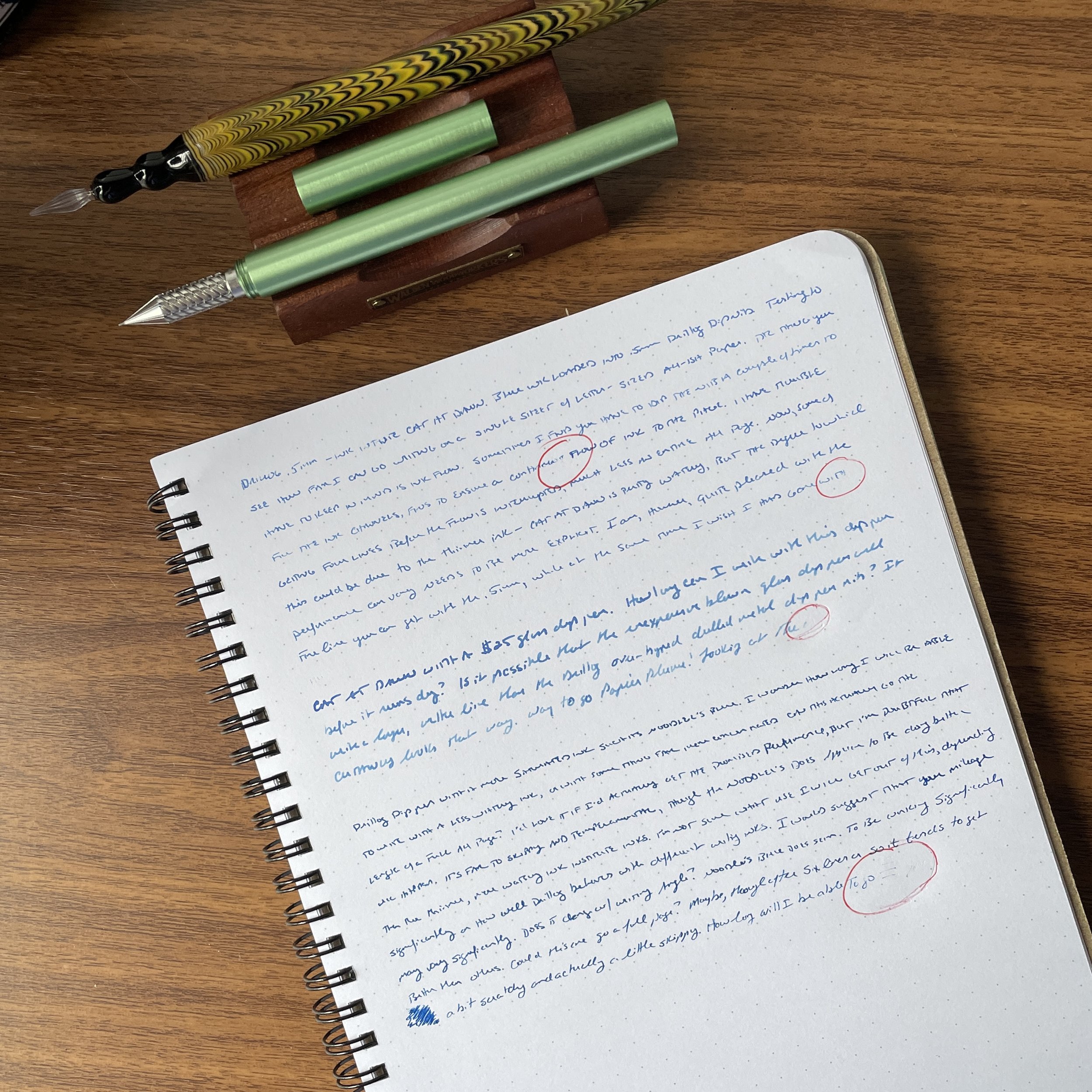A common question I’m asked concerns fountain pens and travel, namely, “Can you fly with a fountain pen?” or “Can you take inked fountain pens on an airplane?” The answer I always give is “Yes”, with a few qualifications. I flew out to Baltimore on Thursday, and as my flight was sitting on the tarmac getting ready to leave Nashville, I realized that I had (inadvertently) packed five eyedroppered fountain pens, two Parker 51s with vintage aerometric filling systems, and a Lamy 2000, all of which were more than half-full of ink. Experiment time!
Instagram Poll Results
My first thought was to ask the readership (via Instagram): Which pens do you think will leak? Here’s what you all thought:
Two of the eyedroppers were Opus 88 Japanese-style pens with the shut-off valve, so I didn’t include them in the poll. Predictably, they didn’t leak.
Real World Results
And the “real world” test results? The only pen that truly leaked - meaning that it dumped a bunch of ink into the cap to the point where I had to rinse it out - was one of two Parker 51s with a vintage aerometric-filling system. Interestingly, a modern “fantasy” Parker 51 that used the same filling system but had a modern barrel and cap didn’t leak or even burp ink slightly. All three Schon Design eyedroppers had absolutely zero ink in the cap or on the nib, and my Lamy 2000 had a blob of ink on the feed that required me to blot it prior to writing. Importantly, I did NOT keep these pens “nibs up” during the flight. They were in my bag, in my pen case on their sides as I had to slide my backpack under the seat.
This unintentional experiment confirmed that you don’t have to worry excessively about flying with fountain pens. It’s never been something that I obsessed over, and these results are typical of what I’ve experienced over the years. Only one out of eight pens burped a significant amount of ink into the cap, though no ink leaked into my pen case, and that one pen was a vintage pen which I probably shouldn’t have flown with inked up anyway.
Tips and Techniques for Flying with Fountain Pens
If you absolutely want to minimize the possibility of a leak when flying with fountain pens, I might suggest the following general tips:
Fly with eyedropper/vacuum-filler pens with shut-off valves, such as Opus 88 pens, the TWSBI Vac700R, or the Pilot Custom 823 (among others).
Make sure any pens with other filling systems are full. This sounds counterintuitive, but it’s the expansion of air inside the filling system as air pressure changes that pushes ink out of the nib during a flight. If you remove the air by filling the pen immediately before taking off, you have a smaller chance of a leak.
Remove your pens from your carry-on bag and fly with them nibs-up in the seat pocket in front of you. Just don’t forget to take them with you when you deplane. I’ve heard horror stories.
Don't fly with vintage pens inked, especially vacumatic and aerometric filling systems. I’m no vintage pen expert, and can’t say why specifically these pens (in my experience) tend to leak more often than modern pens, but I suspect it’s due to modern feed/section/housing designs that minimize leakage. The majority of airplanes leaks I’ve experienced have involved me flying with vintage pens to or from a pen show.
Again, these are not absolutes, and there are no guarantees that you won’t have an issue, but I’ve had a lot of success flying with fountain pens and regularly do so.
Check in on my regular updates from Baltimore via Instagram!
Check Out My Instagram for Real-Time Photos of the 2022 Baltimore Pen Show!
I’ve been posting a series of pictures from the 2022 Baltimore Pen Show, ranging from crowd photos to vendors to nib grinders. It’s a combination of posts and stories (the latter of which are saved to the highlights so they don’t expire), and I’ll continue through today. To give you some examples of what you can find at the show, I picked up several inks from the Laban “Greek Mythology” series, took delivery of some specialty nib grinds I ordered from Custom Nib Studio (Gena Salorino), and had nibs ground in person by J.C. Ament (The Nib Tailor) and Josh Lax (J.J. Lax Pen Co).
Also, to celebrate the Baltimore Pen Show, and to compensate for the fact that I don’t have a table, all orders placed in the Curated Shop while I’m traveling this week will receive a free gift, and I’ve also added some new items from my personal collection to the Gently Used page.
This post does not contain paid third-party affiliate links, and I paid for all products featured in this post with my own funds. The Gentleman Stationer relies upon purchases from the T.G.S. Curated Shop and the T.G.S. Patreon Program for support.
